Making Silver
Producing Silver Flatware by Hand
During one of our special events, Geoffrey Blake, a master silversmith, shared how Paul Revere worked. He heats and hammers the metal as Revere did in the 1700s, using many of the same tools that would have been found in Revere’s shop in colonial Boston.
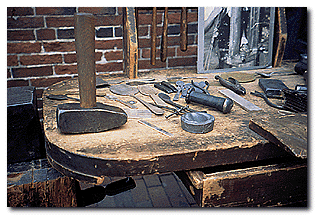
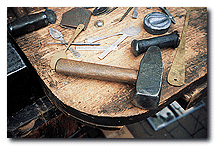
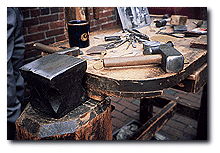
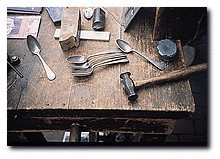
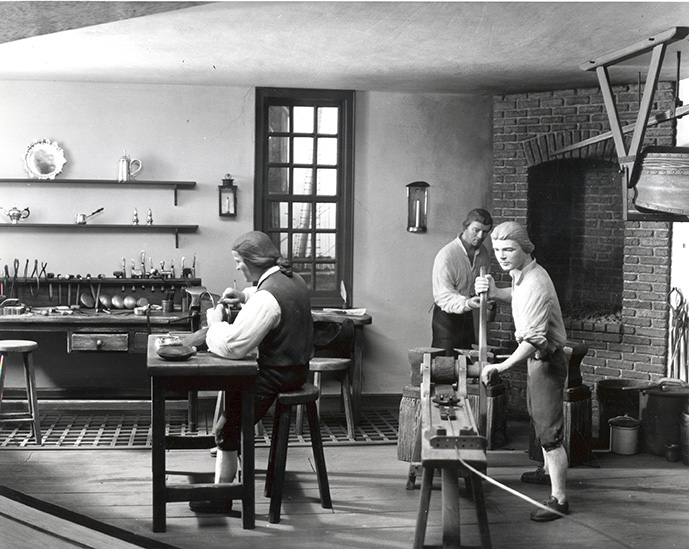
To make a spoon, the silversmith begins with a solid sterling silver bar. He measures the bar against a template, and then notches it on the anvil using a hammer. These notches mark the break between the spoon bowl and the shaft. He then hammers (forges) the metal on the polished side of the anvil using a five pound hammer, shaping the metal to match the pattern.
Silver is a very malleable metal but, as it is forged, it hardens and must be heated (annealed) by the silversmith in order to soften the metal so the forging process can continue. The metal is heated to a glowing red and then plunged into cold water. The process of firing the spoon tarnishes the metal, requiring that it be polished in the final stages. The spoon is then rehammered with a plenishing hammer to smooth out the rough forging marks.
Thanks to our friends at Old Newbury Crafters for providing this information.

